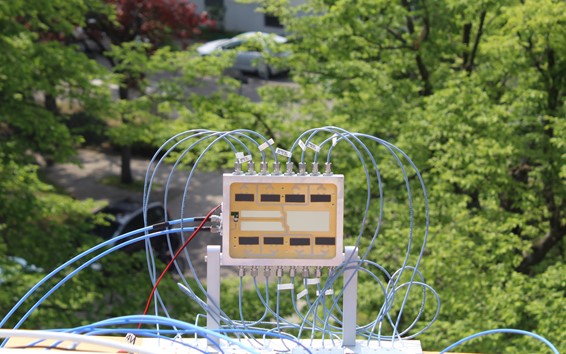Vertiefungsrichtung 17 - Information and Communication
The invention of wired telegraphy was the basis of long-distance communications. After Heinrich Hertz was able to prove the existence of electromagnetic waves in Karlsruhe in 1887, there was a huge boost in the further development of wireline and then wireless telegraphy. While wireline telegraphy immediately became widespread, wireless mobile communication hardly played a role in the everyday life of individuals until the 1990s. With the introduction of digital cellular mobile radio systems, a mass market developed, the growth prospects of which are still significant. An important basis for the operation of mobile communication systems is the existence of fixed networks that carry the traffic over long distances. The data is usually transported via fiber-optic-based networks, which today dominate the wide area networks down to the access networks and, with their high bandwidths, enable the individual subscriber to use applications with data rates in the triple-digit Gigabit/s range. The wireless radio network accesses the fiber optic networks locally and enables mobile access to the user.
Communication networks therefore usually combine radio and landline components. This requires an interdisciplinary knowledge of the physical properties of mobile radio channels as well as knowledge about antennas, glass fibers, transmitter and receiver principles, modulation methods, access mechanisms, algorithms of coding and encryption as well as transport and control protocols. Thus, the training areas, based on the mathematical-physical basics, can be found in high-frequency technology and electronics, communications engineering and optical communication. Radar technologies and techniques have witnessed a quantum leap in the last years. This manifests itself by a transition from analog to digital techniques and technologies following an earlier trend in communication systems. This enforces an information-based approach for the data acquisition and processing. The increased information content of future imaging radar systems that can be achieved by multi-channel operation, improved range and azimuth resolution, time series as well as observation angle diversity (interferometry and tomography).
Information and communication engineering play a key role in numerous technologies
- Mobile and wired communication
- Automotive industry
- Aerospace sector
- Medical technologies
- Sensor/radar technologies and processing
- Industrial electronics and automation technology
More detailed information with study plans and further references can be found on the website of the Department of Electrical Engineering and Information Technology (ETIT). A list of recommended elective modules is available here. In bachelor and master theses it is possible to participate in current research projects.
Contact
Institute of Radio Frequency Engineering and Electronics (IHE)
Responsible
Prof. Dr.-Ing. Christian Koos
Prof. Dr.-Ing. Sebastian Randel
Prof. Dr.-Ing. Laurent Schmalen
Prof. Dr.-Ing. Ahmet Cagri Ulusoy
Prof. Dr.-Ing. Thomas Zwick
Program Consultant
Dr.-Ing. Mario Pauli
Phone: 0721 / 608-46259
Mail: mario.pauli∂kit.edu


